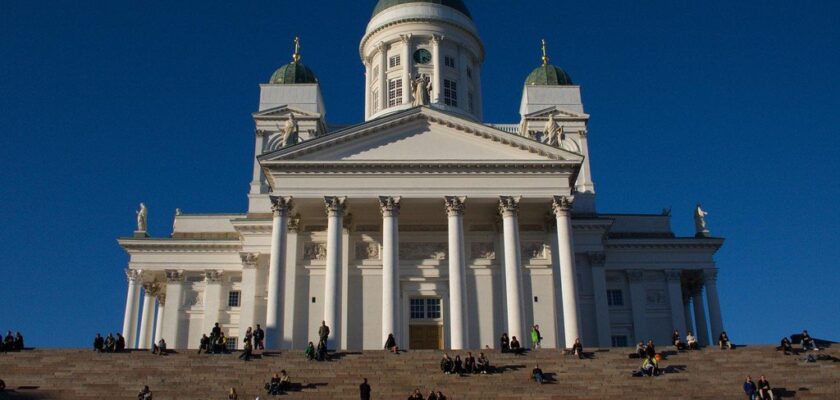Helsinki Cathedral (St. Nicholas Cathedral)
Helsinki Cathedral (Finnish: Tuomiokirkko) is the main cathedral of the Evangelical Lutheran Church of Finland located on the north side of Helsinki’s Senate Square. About half a million tourists visit the church annually.
The construction of the cathedral was carried out between 1830 and 1852 according to the design of German architect Carl Ludwig Engel (1778-1840). In 1840 Engel died and the work was headed by another German architect, Ernst Lohrmann (1803-1870). Lohrmann slightly revised the project, added four small domes to the central dome of the cathedral, built two additional side pavilions, the western one for the bells, and the eastern one for the chapel, also on the roof of the cathedral appeared zinc statues of the 12 apostles, there is information that the idea to decorate the roof with statues of the apostles belongs to Nicholas I (1796-1855).
.Cathedral in Helsinki was consecrated and opened on February 15, 1852 and was named the Church of St. Nicholas heavenly patron saint of trade and navigation, as well as the holy advocate of Emperor Nicholas I initiator of the construction of the temple. In 1917 Finland gained independence and the temple was renamed the Big Church, in 1959, when Helsinki became a bishop’s cathedral, the cathedral was called the Cathedral.
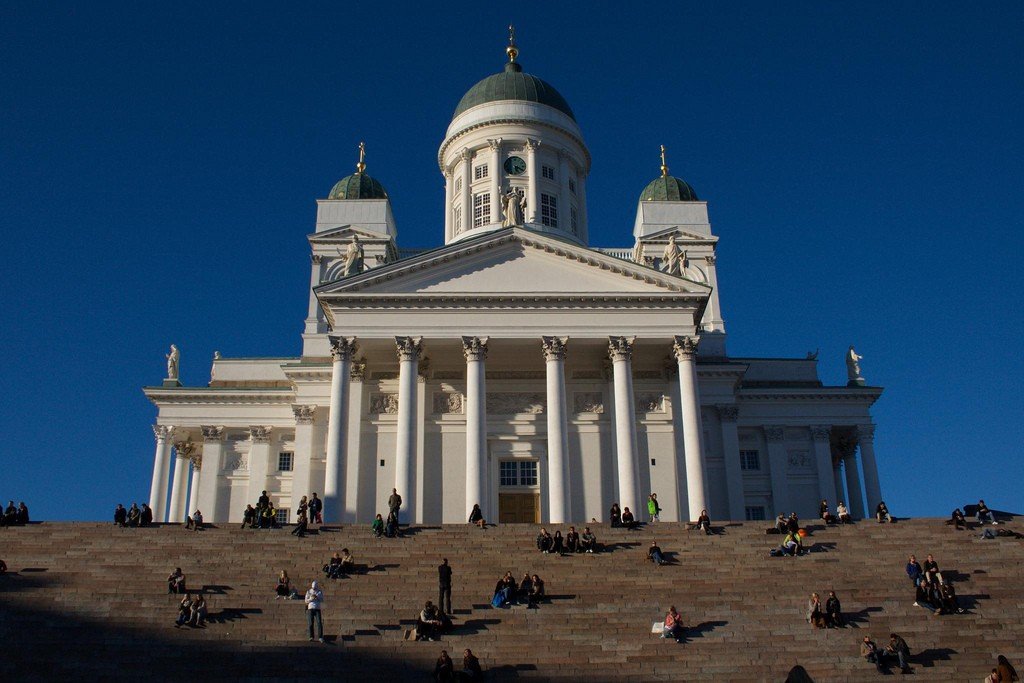
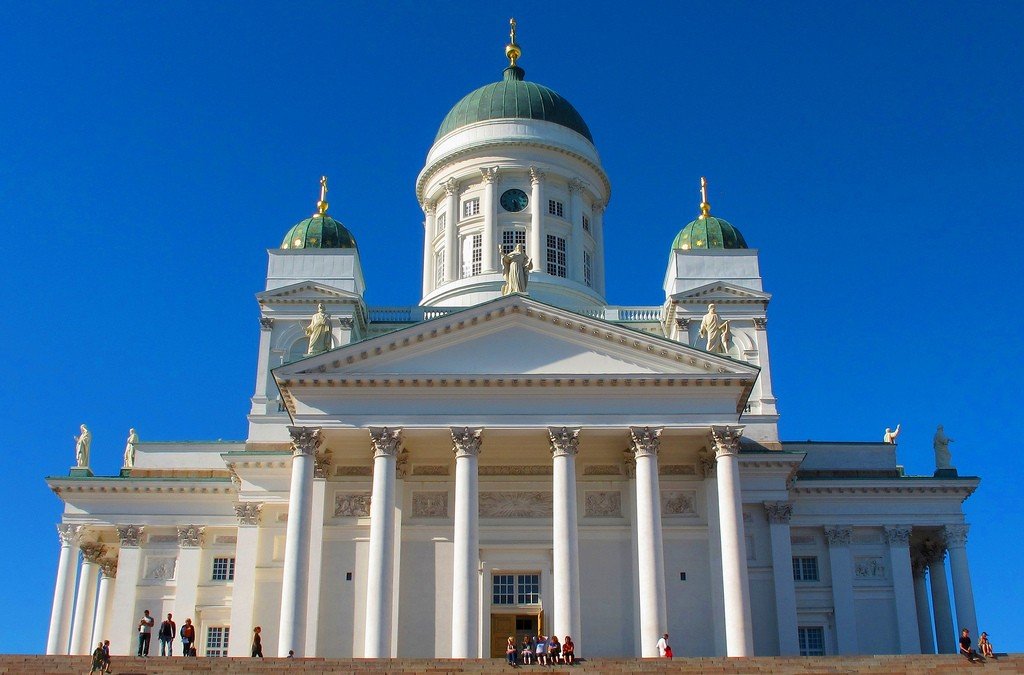
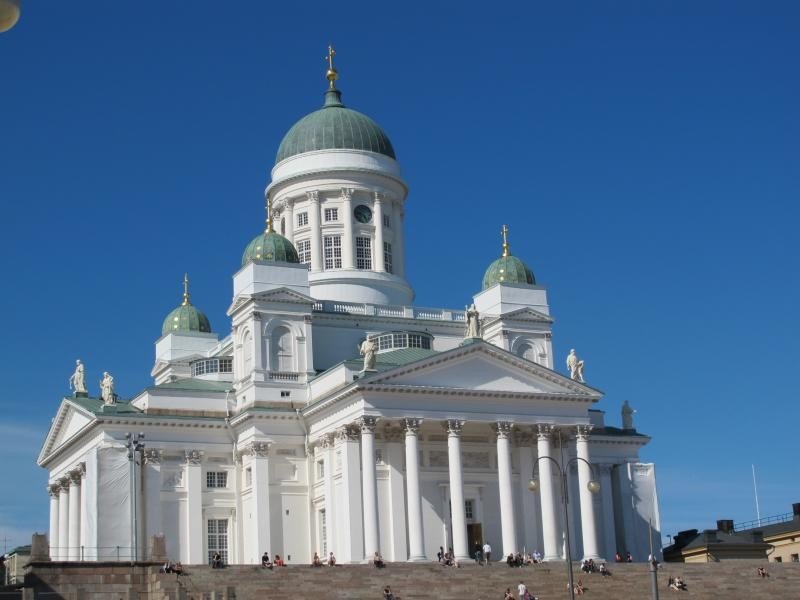
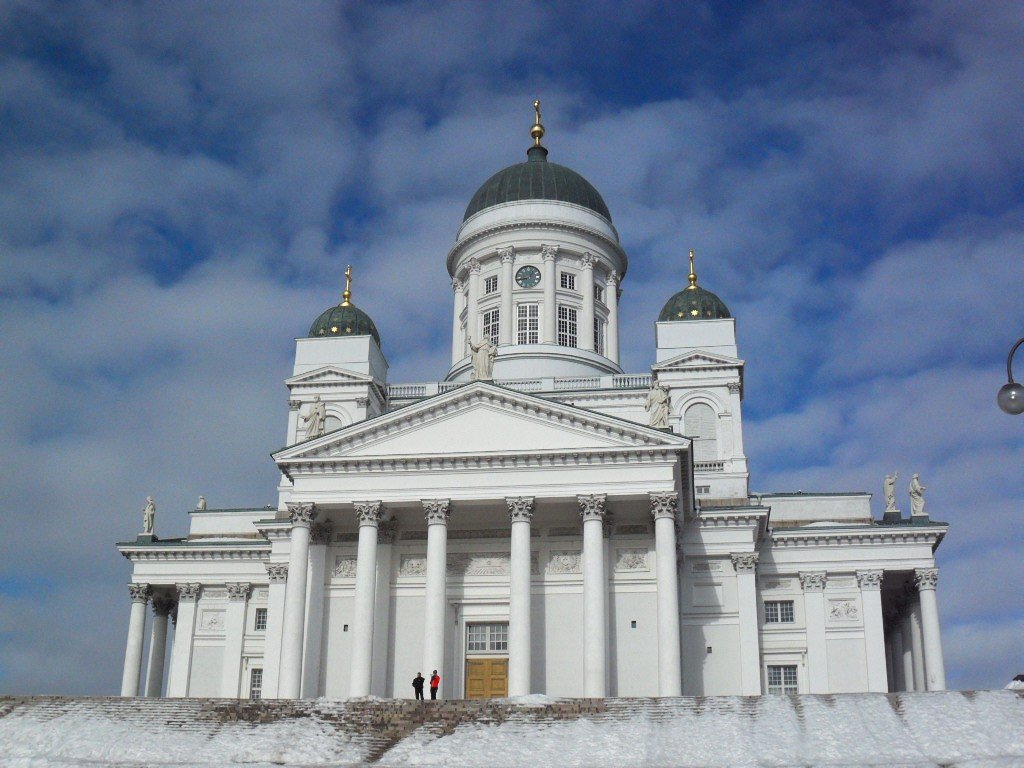
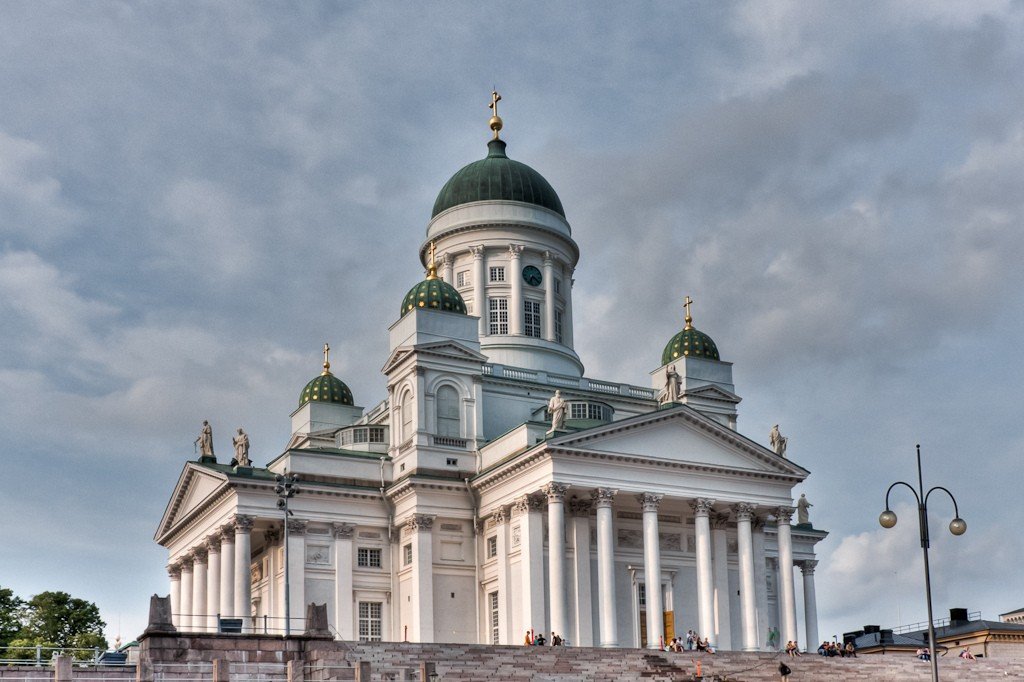
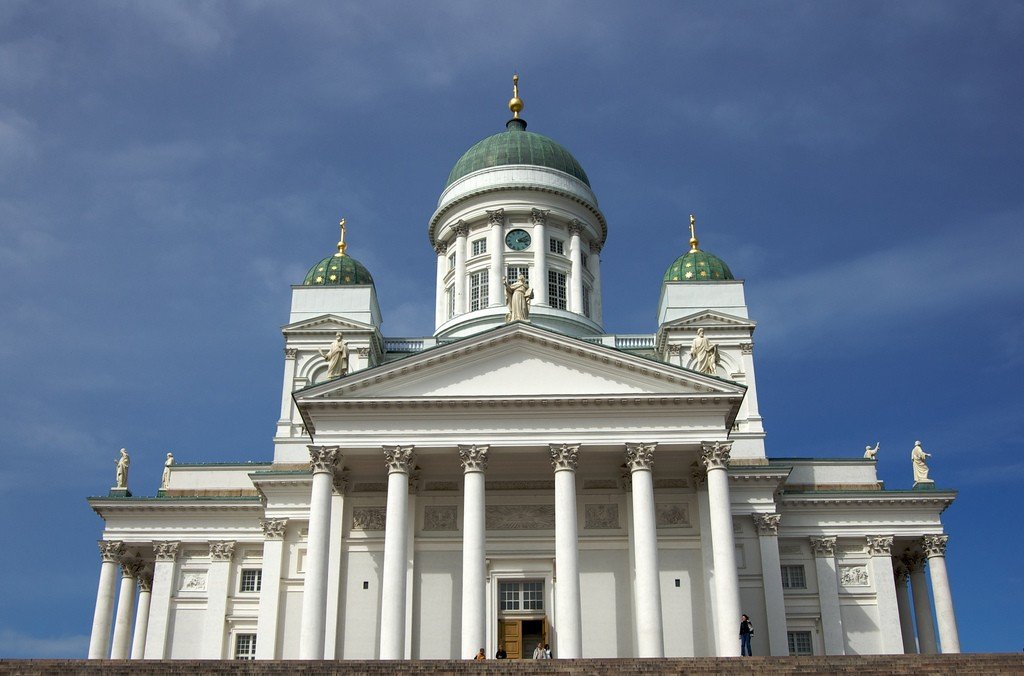
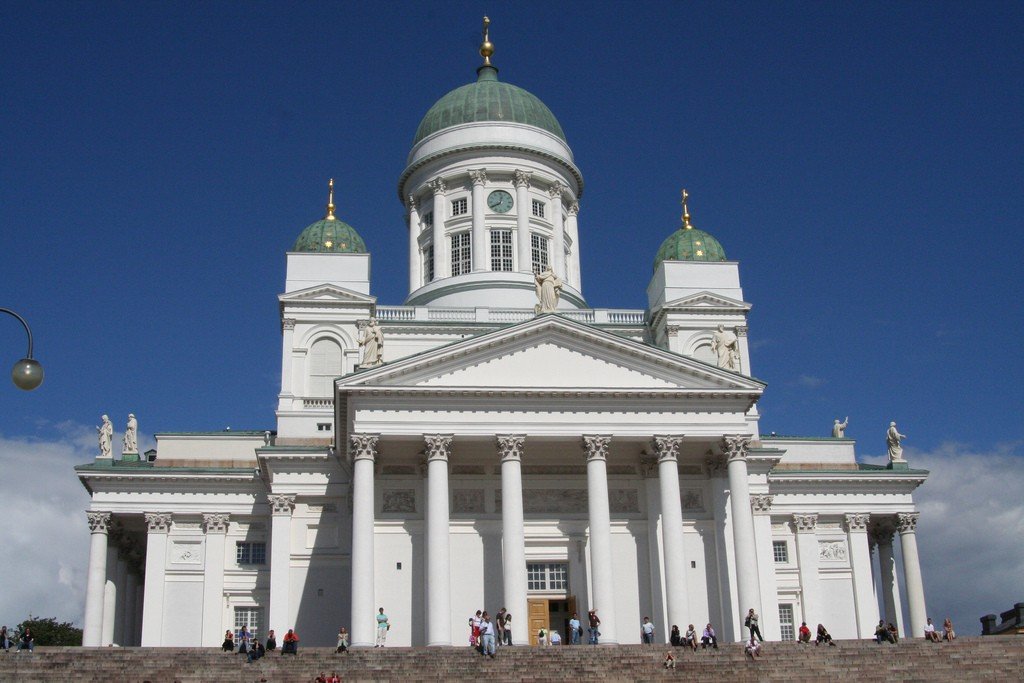
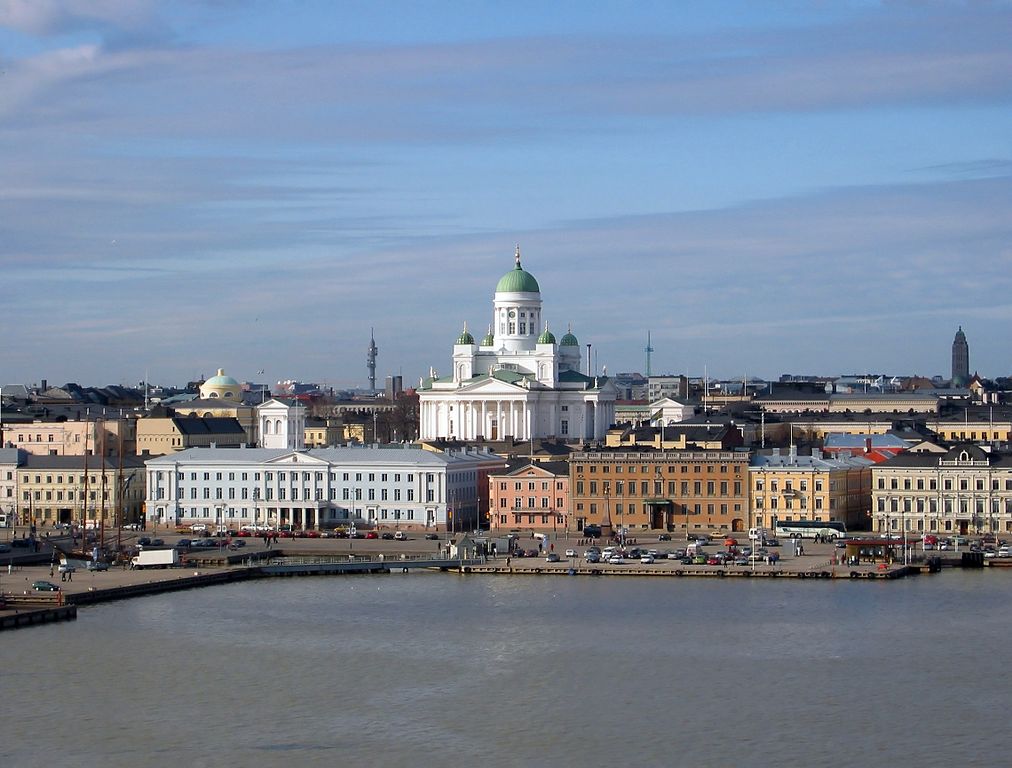
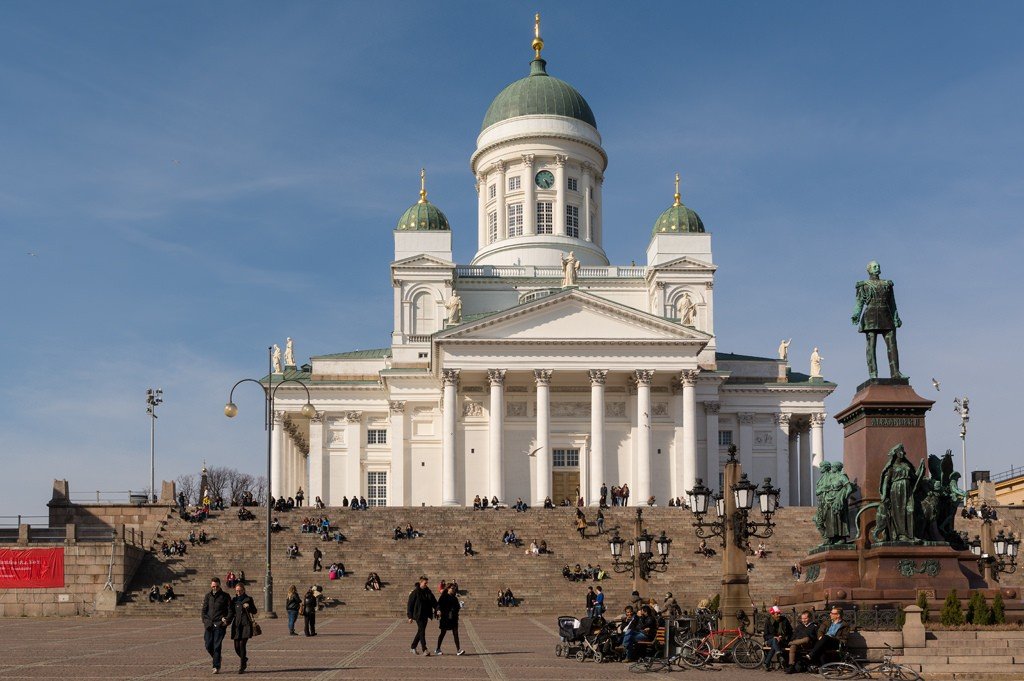
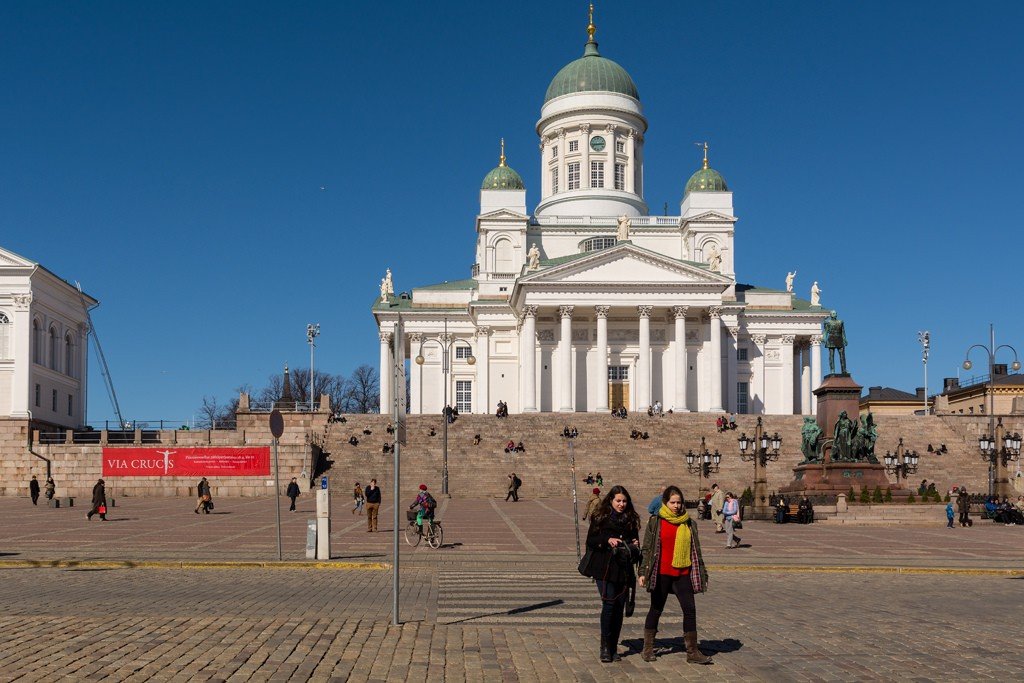
- History of construction
- Exterior view of the cathedral
- Interior view of the cathedral
- Additional information
- Tourist information
Construction History
In 1812 Helsinki was proclaimed the capital of the Grand Duchy of Finland within the Russian Empire, Alexander I ordered the city to be rebuilt according to its new status. At that time Helsinki was a small town of 3500 inhabitants, and had not yet recovered from the last big fire in the fall of 1808, when 77 buildings burned, which is a third of the city. The realization of the new project on reconstruction of the city was engaged in a specially created committee, its head was appointed Johan Albrecht Ehrenström (1762-1847) under his leadership was drawn up a new rectangular-square plan for the construction of Helsinki. German architect Carl Ludwig Engel gave the city its characteristic appearance in the style of classicism, so in particular according to his project built: Senate Palace (period of construction 1818-1822) is located on the east side of the Senate Square is now the State Council, a symbol of state power, the Main Building of the University (period of construction 1828-1832) is located on the west side of the Senate Square, the University Library Building (period of construction 1836-1845) is located in the west opposite the main entrance to the Cathedral, and the end of the Cathedral.
To create the ensemble of Senate Square it was necessary to demolish old buildings. The wooden church of Ulrika Eleonora built in 1724-1727 (Ulrika Eleonora was Queen of Sweden (1688-1741)) was demolished in 1827. The decision to demolish the church was taken by the synod due to its insufficient capacity and presentability. At the same time the city hall, several old buildings and the old cemetery were demolished, the existing market was moved to the Trade Square, the Main Square of the capital of the Grand Duchy of Finland Helsinki was to be created. Now about the existence of the church of Ulrika Eleonora reminds granite medallion with bas-relief and inscription in the northwest corner of the Senate Square and columns that indicate the place where the altar was located. The once demolished cemetery was reminded of the archaeological excavations in Senate Square, during the excavations in the fall of 2012 by the Helsinki City Museum at a depth of 60 cm were found 260 human remains, 40 of them were taken for laboratory research they are planned to be buried in the Helsinki cemetery, and the rest of the remains reburied in the same place, but at a greater depth not accessible to excavators.
.Exterior view of the cathedral
The cathedral in Helsinki is built on a hill in the style of classicism (possibly neoclassicism), has the shape of a symmetrical Greek cross (equilateral cross), five-domed. The central dome of the cathedral symbolizing Christ is surrounded by four domes symbolizing the four evangelists (the authors of the four canonical Gospels: Matthew, Mark, Luke, John), on each of the four sides of the structure is highlighted by a triangular pediment and colonnade with six Corinthian columns, the facades are divided by pilasters of the same architectural order and decorated with bas-reliefs depicting events from the life of Christ. Above the main entrance to the cathedral is inscribed the name of God, “Yahweh”. On the roof of the cathedral at the corners of the pediments, above the columns are set zinc cast figures of the Twelve Apostles (apostle – in Greek. messenger).
.Western pediment: Simon the Cananite – patron of tanners, woodworkers, weavers in the hands of a saw, Peter – patron of fishermen and locksmiths in his hands he holds the keys to the Kingdom of Heaven, Thomas – patron of architects, builders, surveyors in the hands of a ruler-angle.
.Southern pediment: Bartholomew – patron of craftsmen in the hands of a knife, John – patron of family and marriage and also patron of all related to books and publishing in the hands of a bowl and the gospel at the feet of the eagle one of the faces of the tetramorph (winged creature from the visions of the prophet Ezekiel united with four faces; angel, lion, bull, eagle, in Protestants tetramorph is represented as four living creatures that guard the four corners of the Throne of the Lord and the four corners of paradise, now interpreted as symbols of the four evangelists), Matthew – the patron saint of bankers, customs officers, tax officials, accountants and financial services in the hands of writing utensils next to an angel another of the faces in the tetramorph.
East pediment: James Alpheus – patron of people in desperate situations in the hands of a stick, Paul – patron of preachers, theologians, church journalists in the hands of a sword, James Zebedeev – patron of pilgrims, soldiers and cavalrymen in the hands of a staff with shells.
.Northern pediment: Philip – patron of small traders, felters in the hands of a cross and an open book Andrew – patron of fishermen in the hands of an oblique cross (St. Andrew’s), Matthias – protector of carpenters, butchers, blacksmiths in the hands of a halberd. The three-meter statues were made in the workshop of S.P. Deravanne in 1845-1847 by Berlin sculptors: Hermann Schievelbein (1817-1867) – the apostles Paul, Peter, Thomas, Simon the Cananite, James Zavedeev, Matthias and August Julius Wredow (1804-1891) – the apostles Andrew, Matthew, James Alpheus, John, Philip, Bartholomew. The zinc sculptures of the apostles were installed in 1849. A huge monumental granite staircase 60 meters wide leads to the cathedral from the Senate Square. Initially the cathedral was painted in yellow color fitting into the general ensemble with other buildings of the Senate Square, but at the end of XIX century it was painted in three different shades of light gray color. Due to its location on the hill and the white color of the painting, it seems as if the cathedral is floating above the city. The color of the cathedral’s domes is green, indicating that it is dedicated to the Saint.
.Interior view of the cathedral
The interior of the Helsinki Cathedral is characterized by simplicity, nothing superfluous, completely lacks the pomp inherent in Orthodox churches. The interior is painted white, in the corners of the central part of the cathedral are monuments to the greatest figures of the Reformation movement of the church: the founder of Protestantism Martin Luther (1483-1546), theorist of Lutheranism Philip Melanchthon (1497-1560) and the first bishop of the Protestant Lutheran Church in Finland since 1554 Mikael Agrikola (1510-1557) in the fourth corner of the central part is the pulpit of the preacher. The monuments to Luther and Melanchthon are enlarged plaster copies of the Reformation monument in Worms (Germany) by Ernst Ritschel (1804-1861). The monument to Mikael Agricola is the work of Finnish sculptor Ville Valgren (1855-1940). The altar, as it should be, is located in the eastern part of the room. The altar painting “The Position of Christ in the Coffin” was executed by the court painter of Nicholas I Timofey Andreevich Neff (1805-1876). The figures of Angels on the sides of the main altar were created by German sculptor Gustav Bleser (1813-1874). In the Cathedral there is an organ with 57 registers, made at the Danish factory Marcussen & Son in 1967 from the previous organ of the German company Walcker, designed by Ernst Lorman in 1846-1847, only the facade has been preserved. For parishioners in the cathedral are installed armchairs-benches during the service parishioners stand up only in especially significant moments.
.Additional information
In 1970, the crypt (basement, semi-basement under the altar and choral parts, i.e. the vaulted lower floor) of the cathedral was restored according to the design of architect Tarja Salmio-Toiviainen. After a new restoration in 1996-1998, a new altar with a painting by the contemporary Finnish artist Carolus Enckell was installed in the crypt. The organ in the crypt was installed in 2006 by the Finnish organ builder Martti Porthan in a neo-baroque style. The crypt has a seating capacity of 500 people and is used for community meetings, concerts and exhibitions. The Krypta Café is open in the summertime. In 1996-1998 the statues of the apostles on the roof of the cathedral were restored, as well as the bas-reliefs, staircase and interior rooms. Divine services, festive services and marriage ceremonies take place in the cathedral. Ecumenical services (the tendency to unite different denominations within one church) are organized, marking the opening and closing of parliamentary sessions, annual ceremonial services on the occasion of Finland’s Independence Day, ceremonial services dedicated to the awarding of degrees at various faculties of the University of Helsinki and other institutions of higher education. In the crypt of the cathedral, concerts and exhibitions can be attended during the summer.
.Tourist information
The address of St. Nicholas Cathedral is Unioninkatu 29, 00170, Helsinki, Finland. The main entrance is located on the left when looking at the cathedral from the square opposite the entrance to the National Library from Unioninkatu Street. The cathedral is open daily from 9.00 to 18.00 (in July and August from 9.00 to 00.00) Photography in the cathedral is allowed. The souvenir store in the bell tower of the cathedral is open in summer, Monday through Saturday from 9.00 to 18.00 and on Sundays from 12.00 to 20.00. Krypta Café is open daily from June to August from 11.00 to 17.00, entrance to the crypt from Kirkkokatu Street. There are daily services in the cathedral (also in English). Every Wednesday all year round at 12.00 noon there are organ concerts. There is a free toilet in the cathedral (to the left of the entrance).
.